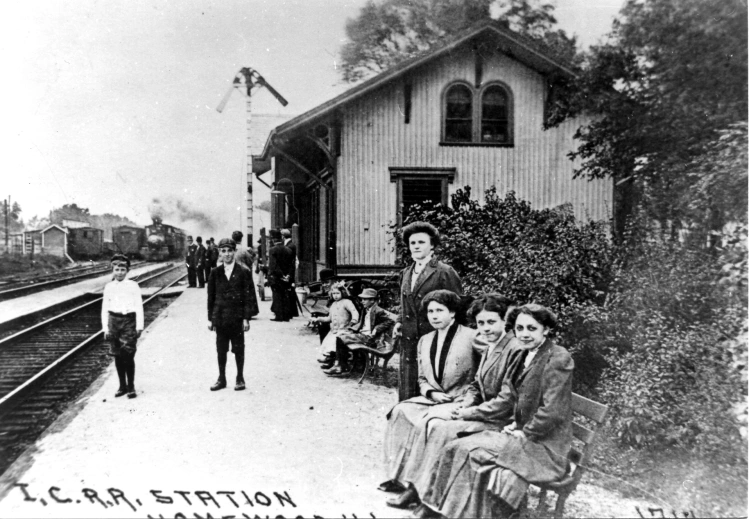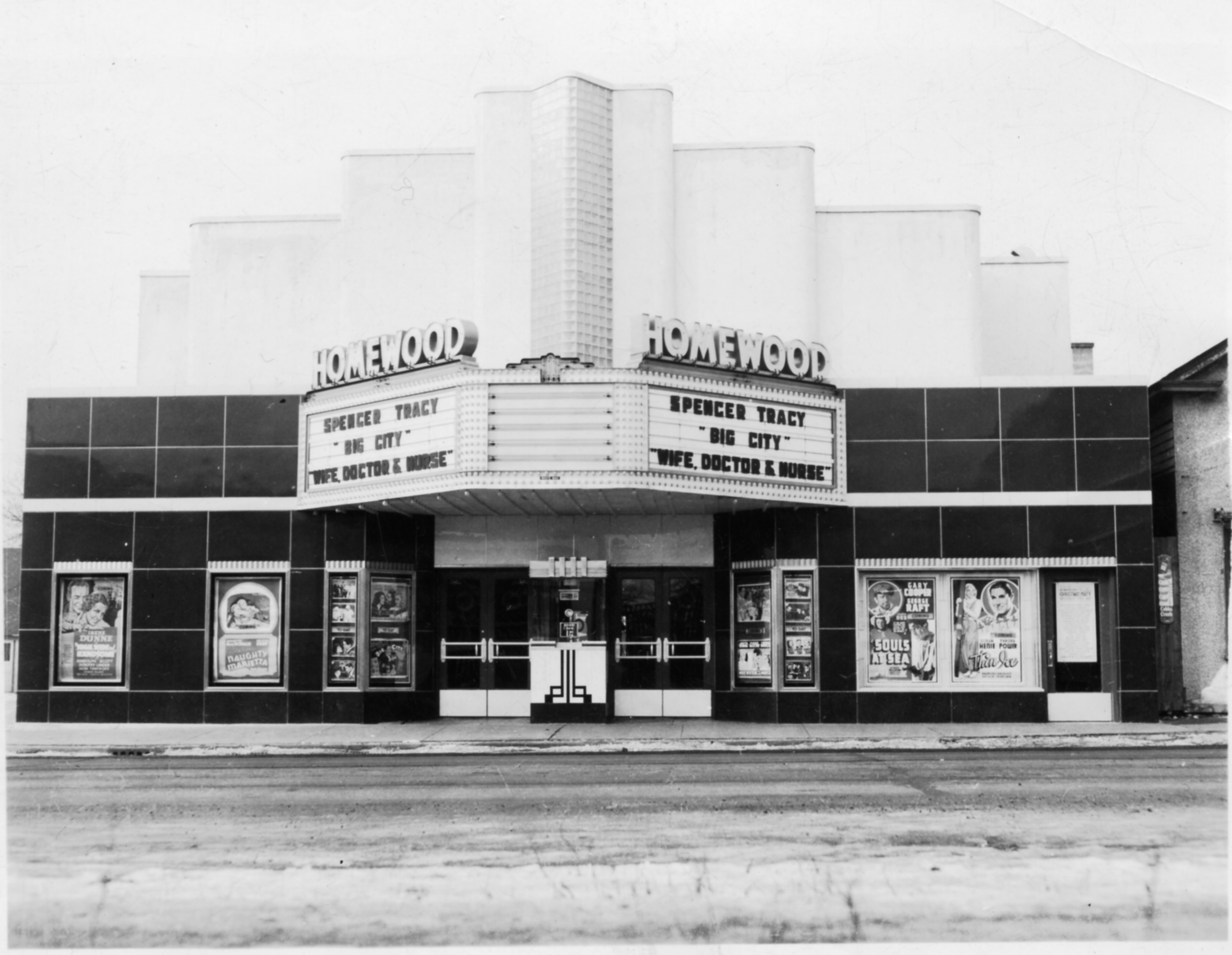The Vincennes Trail, an early Indian trail connecting Vincennes, Indiana, and the settlement at the mouth of the Chicago River, appears to have developed two branches starting at about 10th Street in Chicago Heights. The west branch followed the route of Riegel/Chicago Road to Holbrook Road, then west to Dixie Highway (Vincennes Road) and on north to Blue Island. The first white settlers came to the Homewood area in the 1830s and 1840s. In 1853, James Hart platted Hartford–the first name of Homewood’s downtown district.

Illinois Central Railroad tracks were laid through the Hart subdivision in 1853. The railroad management designated the stop as Thornton Station. The nearby village of Thornton was located on a navigable waterway, Thorn Creek, making it prospectively the more important town. However, a lowering of the creek water level altered Thornton’s development. With the continued expansions of railroads, Thornton Station’s importance increased.

The Thornton Flour Mill Company established its mill here in 1856. The many German families recently arrived from Europe settled on the fertile prairie lands in the area and brought their grain to the mill. While the mill wheels turned the grain to flour, the farmer, and perhaps his family, patronized the business establishments of the expanding village–general stores, blacksmiths, and yes, saloons–which offered homecooked meals free or for a small fee.

Homewood was incorporated in 1893 and could then consider providing its residents with services such as a Volunteer Fire Department in 1896 and a Police Department in 1902. No doubt service by these departments was aided by the installation of telephone and electric service in 1901-1902. The change of the village name to Homewood had been made by the U.S. Post Office Department in 1869.

A rekindled interest in building was fired by the prosperity of the 1920s. Streets stretched beyond the village outskirts. Mains distributed water from the town wells and with new sewers under the newly paved roads, indoor plumbing was possible within the village limits.

The Depression, of course, slowed town expansion, and spirits dropped somewhat, but Homewood residents pulled together. One of the banks even remained solvent through those dark years. Population increased to 3,000 by 1940. Post-World War II growth was explosive. New businesses and subdivisions seemed to sprout overnight, and the population soared to near 18,000 by 1970.

Homewood, one of Chicago’s finer suburbs, still retains the flavor of a “country town,” and today is still regarded as Home Sweet Homewood.